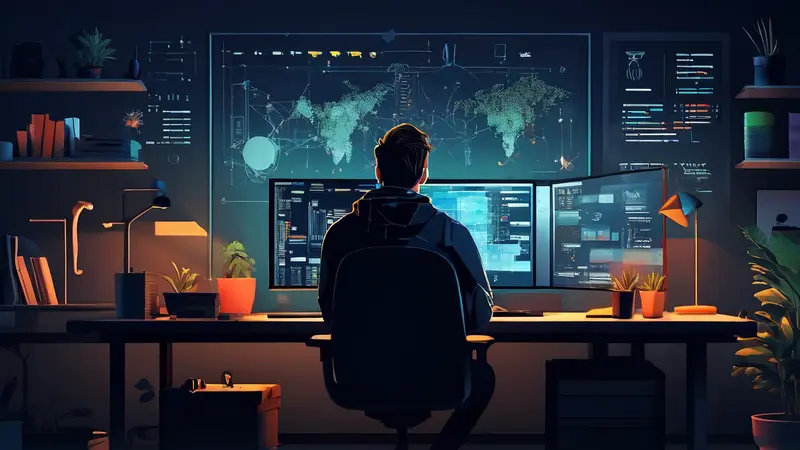The editor of Downcodes will help you understand why some videos require a special player to open! This is not a simple technical failure, but a comprehensive result involving multiple factors such as video encoding methods, proprietary formats, and digital copyright protection (DRM). This article will explain these technical details in simple terms and answer some frequently asked questions to help you better understand this phenomenon.

Some videos must be opened with a dedicated player, mainly due to the way the video file itself is encoded, proprietary formats, or digital copyright protection (DRM) measures. Video content providers can restrict video files to playback on specific players by controlling decoding support for specific formats, embedding digital watermarks, or implementing DRM technology. Among them, the application of digital copyright protection (DRM) technology is the most common and effective method. DRM can not only restrict files from being played on unauthorized players, but also manage users' playback rights, such as number of views, viewing time, etc., thereby protecting the interests of copyright owners.
In order for video files to be transmitted over the Internet and played on various devices, they need to be encoded. Encoding is a compression technique that reduces file size while maintaining video quality. However, different encoders support different video encoding formats, which means that some video players may not be able to recognize or decode video files in specific formats.
Developers may use proprietary encoding formats to protect copyrights or ensure content playback quality. These formats can often only be decoded and played by the developer's own player or authorized player, limiting the versatility of video content.
Even if some players claim to support a wide range of video formats, they may not be able to play videos that use the latest or unconventional encoding techniques. In this case, the video file needs to be played in a dedicated player that supports its specific encoding.
Digital copyright protection technology refers to technology that protects digital media from unauthorized access and copying through a series of encryption measures. By implementing DRM, content providers can control the conditions under which their video content is viewed, copied or forwarded.
DRM technology usually includes the encryption of video files and the corresponding decryption mechanism implemented in the player. Only authorized users can decrypt and play video content through a dedicated player. This method effectively limits the video playback environment.
DRM not only restricts videos to be played on specific players, it can also be refined to user-level permission management. For example, a video may be played only a limited number of times on devices under an account, or may only be viewable within 48 hours of purchase.
Digital watermarking is a technology that embeds specific information, such as copyright information, into video files. This information is usually invisible to viewers, but can be used to track the distribution and use of video files.
By embedding unique watermarks in video content, content providers can track and identify the source of illegal distribution. This allows copyright owners to pursue the case even if the video is transcoded or formatted.
In addition to preventing piracy, digital watermarks can also be used to collect data on how videos are consumed. This data is invaluable to content providers, helping them better understand their audiences and markets.
The phenomenon of having to use a dedicated player to open certain videos involves a series of complex technologies and copyright protection measures. The proprietaryization of encoding formats, the application of digital copyright protection (DRM) technology, and the use of digital watermarking technology are all intended to protect the copyright of content and prevent illegal copying and distribution. Although this brings a certain degree of inconvenience to users, in the long run, these measures are necessary to protect the interests of creators and promote the development of a healthy digital content ecosystem.
Why do I need to use a dedicated player to open some videos?
Some videos use dedicated players, mainly due to format incompatibility issues. Different video formats have different encoding and compression methods. If your video files use specific encoding or compression formats, ordinary players may not be able to decode and play these files correctly.
How do I know if I need to use a dedicated player?
You can check the video file's extension (such as .mp4, .avi, .mkv, etc.) and the file's properties to determine whether you need to use a dedicated player. If you have playback issues or error messages when trying to open a video using a universal player, you may want to find a dedicated player for that video format.
What dedicated players are available for different video formats?
There are many dedicated players available in the market, such as VLC media player, KMPlayer, PotPlayer, etc. These players usually support a wide range of video formats, including the common MP4, AVI, MKV, MOV, etc., as well as some more proprietary formats such as FLV, RMVB, etc. You can choose a player that suits your needs based on the format of the video.
Are there other ways to open certain video formats?
If you don't want to download and install a dedicated player, there are other ways to try opening certain video formats. You can convert videos to more common formats through online video conversion tools, and then open them with your favorite player. In addition, some video editing software can also help you convert or re-encode video files to make them compatible with universal players. Remember, there may be a loss of video quality when converting or re-encoding your video, so proceed with caution.
These are answers to frequently asked questions about why certain videos require a dedicated player and how to identify and choose the right player. Hope this helps!
I hope the answers from the editor of Downcodes can help you solve your doubts! If you have any more questions, feel free to ask.